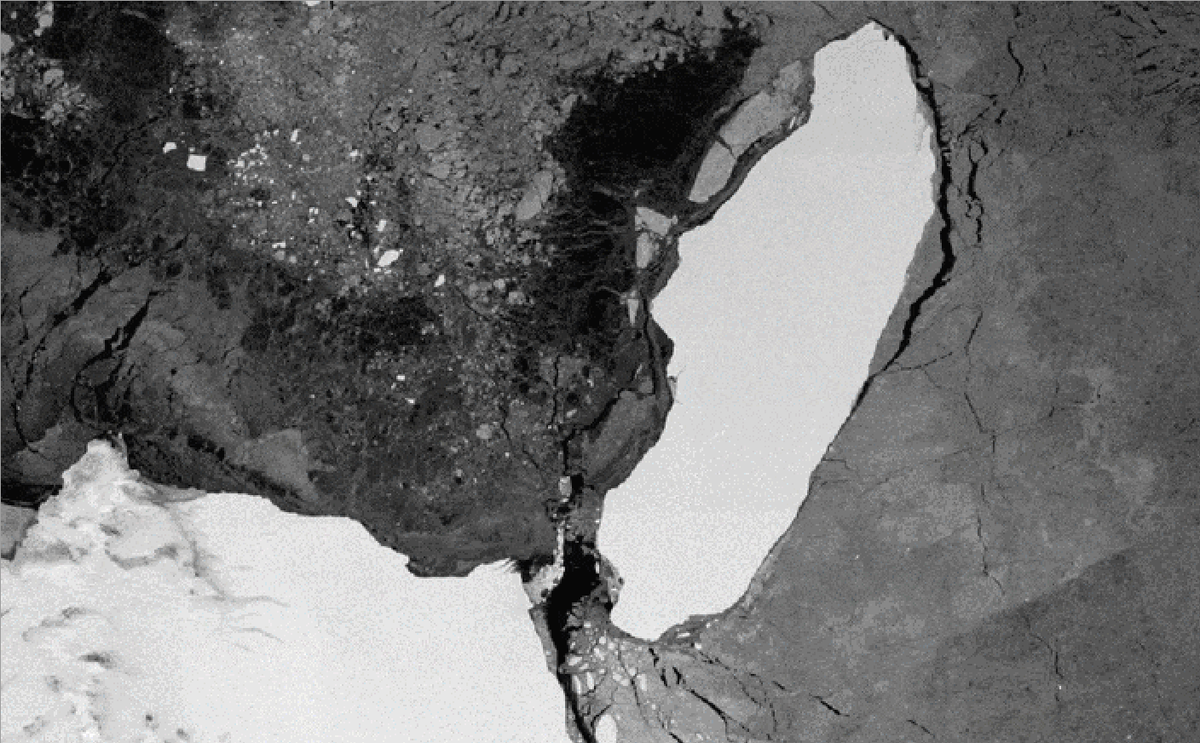
The iceberg that was once the largest in the world has melted into several small fragments that are no longer worth tracking.
A68 weighed billions of tonnes and was bigger than the size of Norfolk when it broke away from the Larsen C ice shelf in the Weddell Sea on the edge of the Antarctic Peninsula in mid-2017.
The mammoth iceberg barely moved for a year before it started to drift up an area known as “iceberg alley” that leads north from Antarctica.
A68’s trajectory towards the coast of South Georgia in the southern Atlantic Ocean raised fears for wildlife, including penguins and seals, on the island.
It was originally thought that the iceberg could have lasted for several years, potentially taking up to a decade to melt, if it had become grounded on South Georgia.
Read more
But the iceberg broke up into smaller and smaller fragments about 140nm northeast of the British overseas territory.
The largest remaining piece of A68 was about 3x2nm but the fragments were considered no longer worth tracking by the US National Ice Center.
Adrian Luckman, a glaciologist and professor of geology at Swansea University, said it was amazing that A68 lasted as long as it did.
“When it first calved away, Iceberg A68 was around 400 times as long as it was thick – very different from the shape one normally imagines an iceberg to be,” Prof Luckman told The Independent.
“We expected that it would not be long before A68 broke into smaller pieces but it was actually several years and several hundred miles of drifting before it did so.”
A68 became a social media sensation as the public followed its journey, sharing satellite images that have also allowed scientists to better understand how large icebergs are influenced by the climate crisis.
Prof Luckman said: “Iceberg A68 retained its celebrity status largely because the volume and variety of satellite data now available meant that every step of its journey could be watched in detail, including through the dark winter months.
“These almost daily images allowed the public to follow the story in near-real-time.
“They also allow scientists to better understand how large icebergs move under the influence of ocean currents and winds, how quickly ice melts in warming ocean waters as the iceberg drifted north, and how the iceberg fragments finally disintegrated.
“All these lessons will help us to better understand how ice sheets will respond to climate change elsewhere in Antarctica where the loss of ice volume is significant and getting rapidly worse.”
Prof Luckman added that while the calving and demise of a single iceberg such as A68 cannot be directly attributed to climate change, “the loss of ice around Antarctica, which has increased by a factor of five since the 1990s, is certainly a result of changes in ocean heat and circulation”.
Related posts:
Views: 0
 RSS Feed
RSS Feed

















 April 18th, 2021
April 18th, 2021  Awake Goy
Awake Goy  Posted in
Posted in  Tags:
Tags: 
















